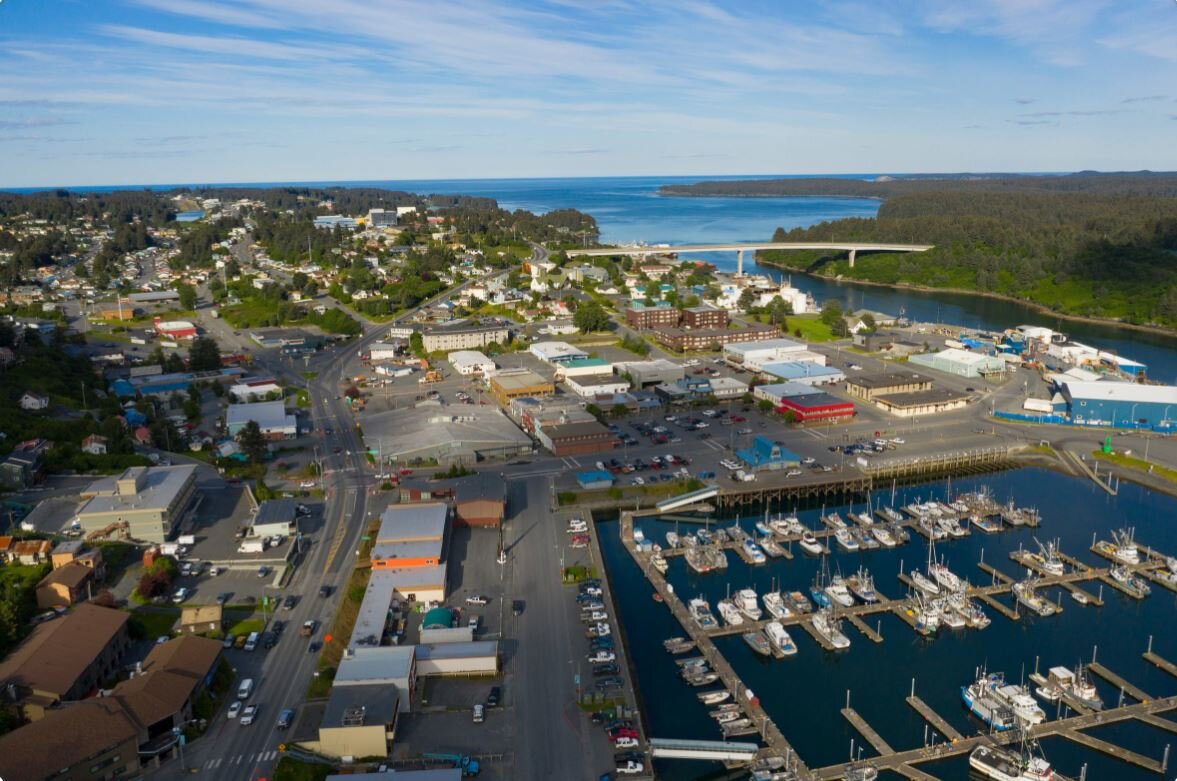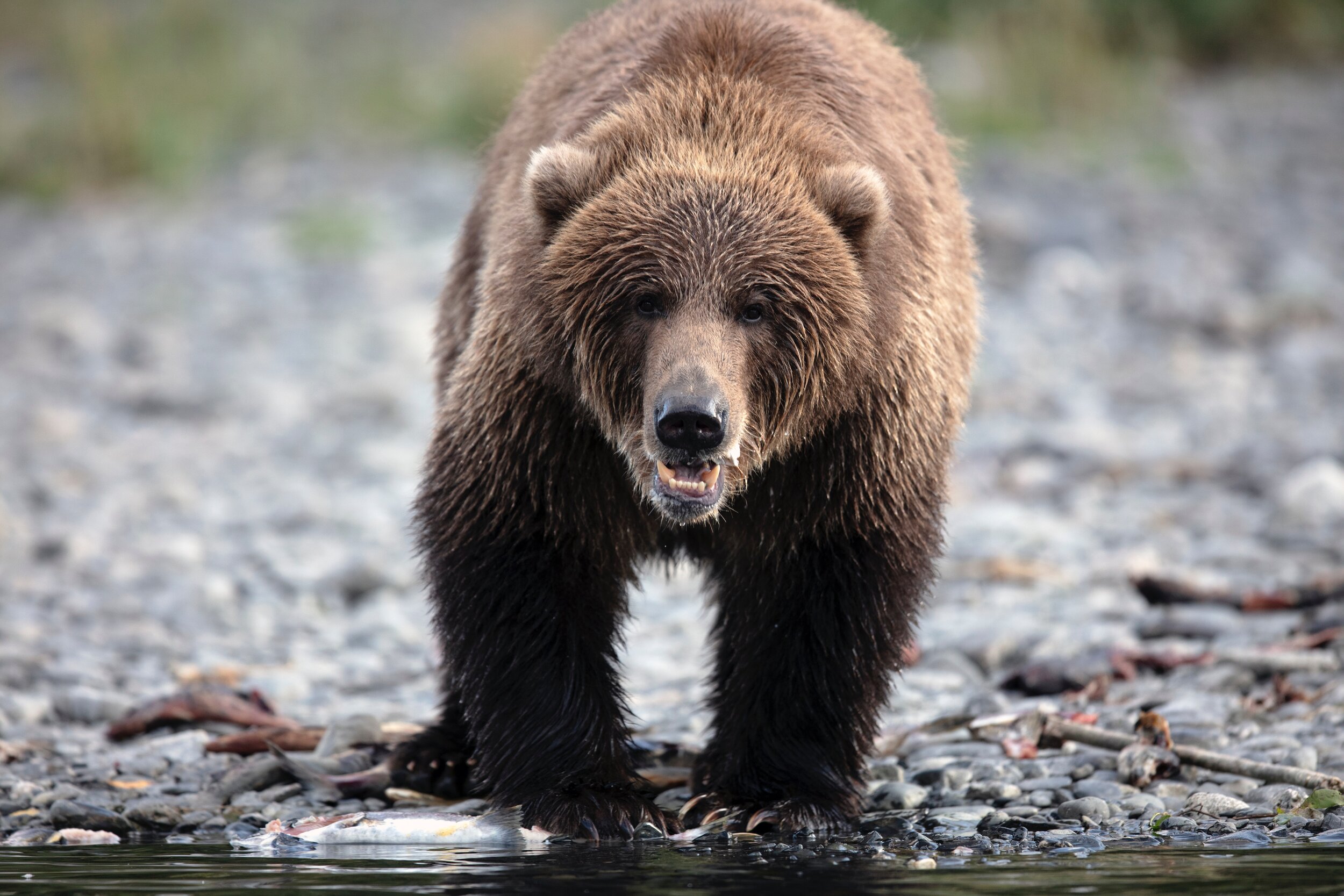By Hannah Pembroke
A language’s relationship to its community is not unlike the connection nature has to individual animals- the two depend on one another. A community cannot prosper without rich sociolinguistics, the same way an animal cannot thrive without an adequate environment. The native people of Alaska have been stewards of their oral traditions for centuries and have demonstrated equal respect for language as they have for the natural world in which they live. The Alutiiq language in the South West coastal region of Alaska presents one of the most complete connections between language and animals in modern documentation, with the rich history of the word Kodiak (“Kodiak [Kodiaks, Kodiak Alutiiq, Kodiak Island Sugpiaq]”). That is not to say it is the only example of a native culture marrying language and animals, for the oral traditions of Alaskan Native tribes have received relatively little documentation by the United States Geological Survey (USGS) or any other government mapping and linguistic analysis. However, this lack of federal documentation does not limit the social and historical significance of the word Kodiak.
The respect held for the Kodiak bear by the Alutiiq people is undeniable and has transcended centuries. While the Kodiak Island Natives have historically hunted the bears as a large source of meat and hide, the head of the bear is traditionally “left in the field as a sign of respect to the spirit of the bears” (“Kodiak Bear Fact Sheet”). Similarly, according to the Lake Country Museum and Archives, Native Alaskans would wear the claws of the Kodiak bear around their necks during ceremonies and rituals. The claws are seen as a symbol of success and are believed to “bring strength and power to an individual,” specifically the individual who killed the bear and wears its claws (Carney). The relationship between the bear and the people of Kodiak Island is heavily intertwined with a connection to the spirit world and a source of strength. While that relationship has shifted along with modern times, the community of Kodiak Island still relies on the great bear, with the Alutiiq Museum and the Kodiak Brown Bear Center glorifying the history and cultural importance of the animal.
Originally spelled Koniag by the Alutiiq people, the Russian ― and now more widely recognized ― spelling, Kodiak, was first written into history by Captain Cook in 1785 (GNIS Detail - Kodiak Island). Despite Koniag being the name of the dialect that Captain Cook and his men were surrounded by on the island, his written preservation of the word was referencing the bears that populated the island. These massive omnivores have been isolated on the Kodiak Archipelago since the last ice age that occurred over 12,000 years ago, meaning that the bears present today are genetically quite similar to those described by Captain Cook (Van Daele). It is no surprise that it was the bears, instead of the language, that caught the explorers’ interests, as the Russians began hunting, killing, and selling Kodiak bear products throughout the 1800s (Van Daele). While the Alutiiq tribe had been hunting the Kodiak bear for centuries, the explorers began depleting population numbers and altering the environment once they determined the bears would make a profitable trading business.
Upon the arrival of the voyagers, the Kodiak bears and their coexisting native tribes were exploited for nearly two centuries. It was not until the mid-1960s that all bear population control attempts in Kodiak were ceased. However, concern for the damage done by European and Asian explorers began in 1941 with the arrival of the Kodiak National Wildlife Refuge (Van Daele). Despite the depletion that occurred throughout the 1800 and 1900s, Kodiak bear populations have now returned to a healthy and sustainable level, of approximately 3,500 in total (Van Daele). The population has been steadily growing over the last decade, and currently is demonstrating signs that it will continue increasing. The Kodiak Archipelago provides an environment rich in the desirable commodities a bear needs to reproduce and survive. The biggest threat to the bears is climate change, as berries are beginning to ripen sooner in the season, affecting the Kodiak bears salmon hunting patterns. Humans and the commercial sale of bear products has become less of an issue in recent years. Hunting the Kodiak bear has been relegalalized, and it is regulated by the Alaska Department of Fish and Game. Though population numbers are currently stable and are able to support being hunted by both the Alutiiq and guided hunting groups, local and statewide organizations (such as the Alaska Wildlife Alliance), must still fight to maintain healthy population numbers. Hunting laws and regulations are constantly under reevaluation to help support a stable and growing bear population.
Photo courtesy of Brent Jones/Unsplash
The long-lasting impression created by the Kodiak bear began long before Captain Cook’s notation of the species and the exploitation of the animal. The implications of the deep connection and respect humans have developed with this isolated and impressive creature can be linked back to the naming of the Koniag dialect. The Alutiiq language is built of two main dialects: Chugach and Koniag, with the distinction between the two being their primary locations. The Chugach dialect can be found on the Kenai Peninsula and eastward to Prince William Sound, whereas the Koniag dialect makes its home throughout the Kodiak Archipelago and Alaska Peninsula (“Dialects and Styles of Alutiiq”). This nomenclatural distinction is critical when discussing the influence of the Kodiak bear, because while there is no written documentation accessible to non-Alutiiq people to prove the etymology, it does highly suggest that the dialect was named in honor of the bear, not the other way around. The process of naming a large system of islands and an entire dialect, specifically for the dominant animal that lives there, is a sign of the utmost respect and recognition that a human community can demonstrate.
Photo courtesy of Raymond Bucko, SJ/Flickr
Works Cited from: Lake County Museum and Archives, Alutiiq Museum, USGS, History Channel, Kodiak, Alaska Department of Fish and Game







